ANALYTICAL SPECTROSCOPY
by Raymond P. W. Scott
D.Sc., F.R.S.C., C.Chem., C.Sci. F.A.I.C, F.C.S.
Essential Information for the Analytical Chemist
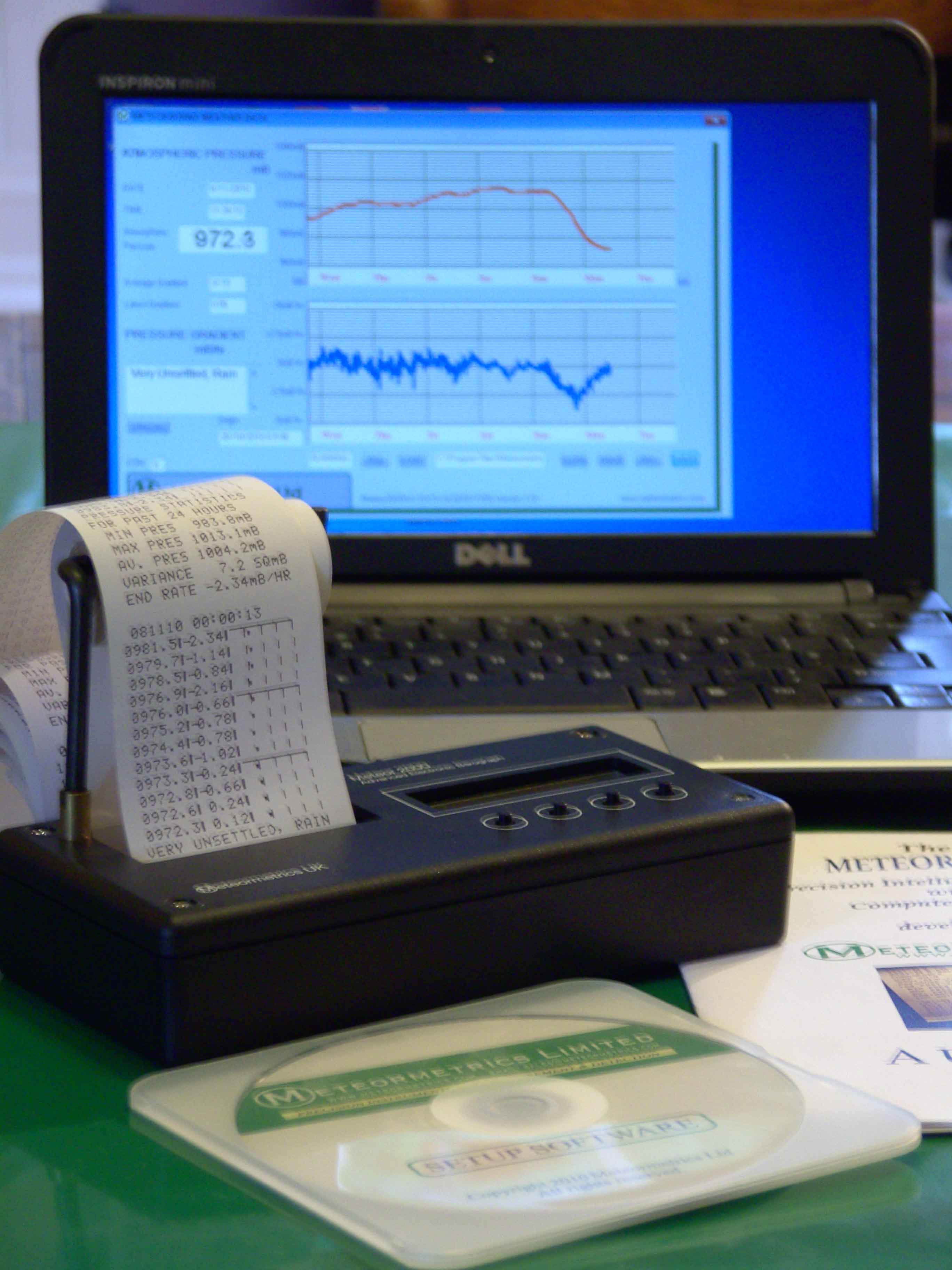
Specialising in custom-designed, precision scientific instruments, built, programmed and calibrated
to the most exacting standards. The range includes precision dataloging barographs,
with built-in statistical analysis, Barographic Transient Event Recorders
and computer-interfaced detectors and sensors
for environmental monitoring & process control.
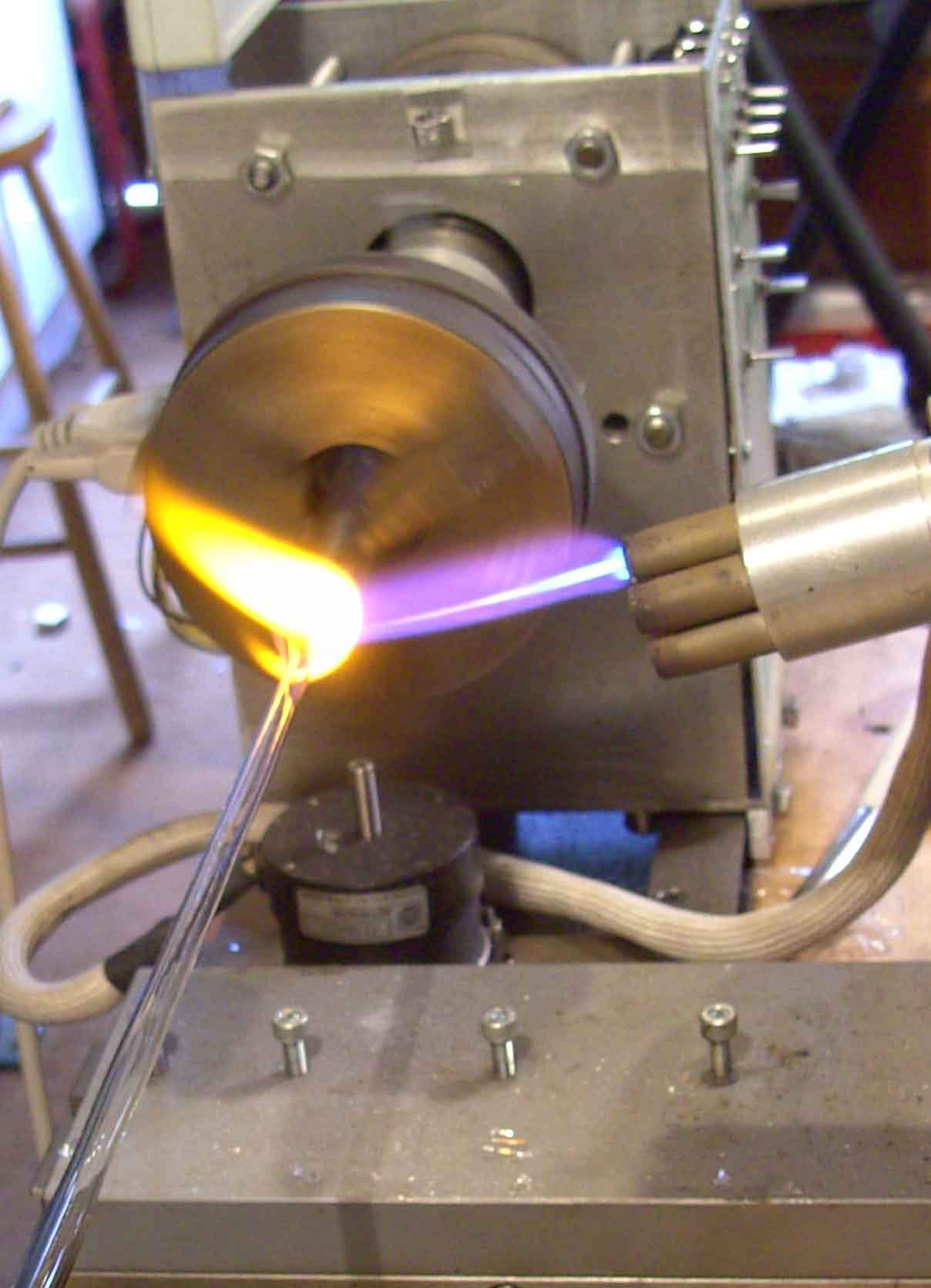
A site dedicated to scientific techniques, experimental methods, &
investigative tools for the inventor, researcher
and laboratory pioneer. Articles on glassblowing, electronics, metalcasting, magnetic
measurements with new material added continually. Check it out!
www.drkfs.net
A Modern High Resolution NMR Machine Fitted with a Superconducting Magnet
Modern high-resolution NMR
spectrometers must employ Superconducting Magnets to achieve and
utilize homogeneous fields of 176 kGauss operating at 750 MHz for
proton NMR. Superconducting Magnets are constructed with solenoids
made of resistance free alloys carrying a constant and persistent
current. These superconducting solenoids, however, are only
superconducting at very low temperatures and to achieve these low
temperatures liquid nitrogen and liquid helium baths must be
employed. In addition to sample spinning, in order to obtain the
necessary magnetic field homogeneity a field frequency
lock is also necessary. The field is monitored by the NMR
frequency of a reference substance (normally the 2H1
signal from a deuterated solvent) and any signal resulting from field
drift is used in a feedback loop to correct the magnetic field back
to its defined value. In addition ‘shim’ coils are
employed to finally adjust the magnetic field and it is the current
in these shim coils that is used to control the field homogeneity
from the deuterated solvent signal. A block diagram depicting the
layout of a modern NMR instrument is shown in figure 7.
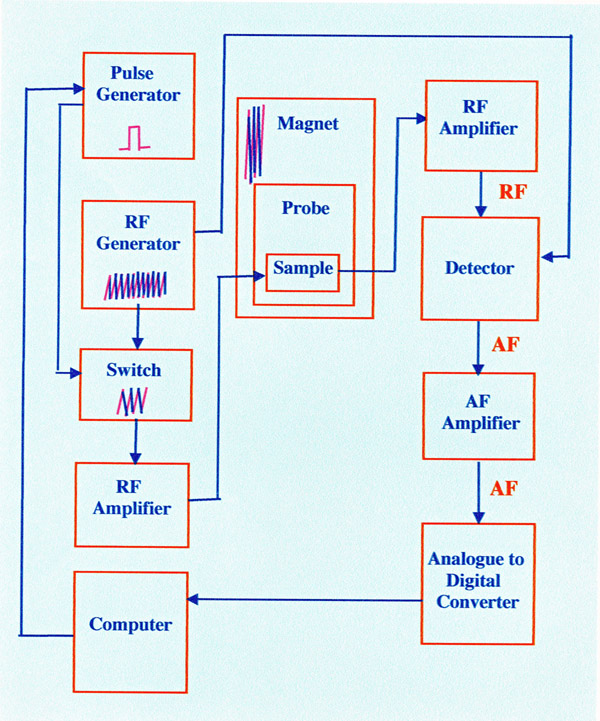
The apparatus is controlled by a
computer that feeds a signal to a pulse generator, which selects
pulses of high frequency radiation generated by a radio frequency
(RF) generator that are then passed to a RF amplifier and thence to
the coils of the sample probe. The energy absorbed provides a signal,
which is amplified and passed to the detector. In the detector, the
RF signal is heterodyned with the original RF source frequency and
the frequency difference (now an audio frequency (AF) signal) is
amplified by an AF amplifier. The output from the AF amplifier is
then digitized by an analogue to digital converter (A/D converter).
The digitized signal is then acquired by the computer and processed.
Superconducting Magnets require a
continuous supply of current and, unfortunately, consume large
quantities of cryoscopic fluids (e.g. liquid nitrogen and
liquid helium ). The magnet consists of a main field superconducting
coil with a number of other smaller coils that can control field
gradients in different directions with respect to the main field.
These smaller coils, called shim coils, are used to improve the
homogeneity of the field. A modern NMR machine fitted with a
superconducting magnet is depicted in figure 8.

The superconducting coils must
remain submerged in liquid helium during use, with the current in
each, established during installation. Outside the liquid helium bath
is a liquid nitrogen bath, which reduces the heat transfer to the
helium bath, and thus conserves helium . There are liquid level
sensors that actuate warning devices in both the helium and nitrogen
baths to ensure they do not become exhausted. There is also a number
of shim coils associated with the probe inside the magnet that
operate at room temperature. These shim coils provide the final
adjustments to field homogeneity, which, in modern instruments, are
usually under computer control. An air supply, provided through
appropriate conduits to the probe, actuates the turbine that spins
the sample and also provides energy for any automatic sample handling
devices.
A diagram of an NMR probe is shown
in figure 9. Inside the probe is a Dewar vessel, which holds the
sample tube, the various sensor coils and the conduits to the system.
The Dewar is also fitted with a heater to control the probe and
sample at a prescribed temperature. The Dewar contains two coils; the
RF lock-coil that is usually tuned to deuterium as the
reference nucleus, which, in effect, provides the calibrating scale
for the Spectrum and the RF coil for the nucleus under
examination. The total RF circuit is not included in the
diagram to avoid confusion. There are two trimming capacitors
situated in the probe, one for each of the two coils mentioned, and
are adjustable from outside the probe. The probe shown is the
standard type of NMR probe and cannot be used for flow through
samples. In the standard instrument, the probe is not accessible from
both the top and the base of the magnet but usually only from the
base.
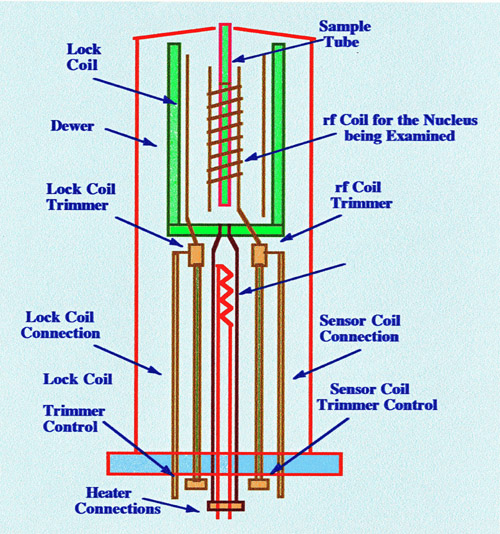
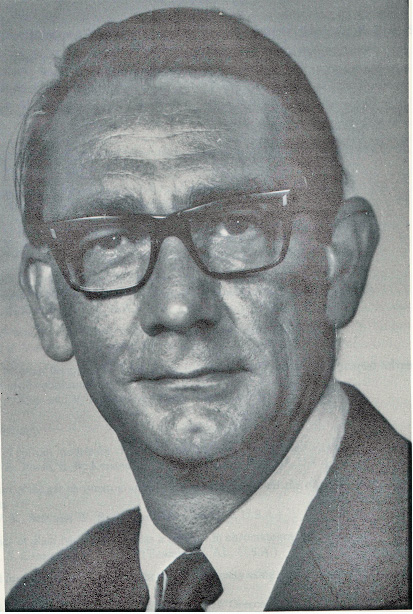
About the Author
RAYMOND PETER WILLIAM SCOTT was born on June 20 1924 in Erith, Kent, UK. He studied at the
University of London, obtaining his B.Sc. degree in 1946 and his D.Sc. degree in 1960.
After spending more than a decade at Benzole Producers, Ltd. Where he became head of
the Physical Chemistry Laboratory, he moved to Unilever Research Laboratories as
Manager of their Physical Chemistry department. In 1969 he became Director of Physical
Chemistry at Hoffmann-La Roche, Nutley, NJ, U.S.A. and subsequently accepted the position
of Director of the Applied Research Department at the Perkin-Elmer Corporation, Norwalk, CT, U.S.A.
In 1986 he became an independent consultant and was appointed Visiting Professor at Georgetown
University, Washington, DC, U.S.A. and at Berkbeck College of the University of London; in 1986
he retired but continues to write technical books dealing with various aspects of physical chemistry
and physical chemical techniques. Dr. Scott has authored or co-authored over 200 peer reviewed
scientific papers and authored, co-authored or edited over thirty books on various aspects of
physical and analytical chemistry. Dr. Scott was a founding member of the British chromatography
Society and received the American Chemical society Award in chromatography (1977), the
M. S. Tswett chromatography Medal (1978), the Tswett chromatography Medal U.S.S.R., (1979),
the A. J. P. Martin chromatography Award (1982) and the Royal Society of Chemistry Award in
Analysis and Instrumentation (1988).
Dr. Scott’s activities in gas chromatography started at the inception of the technique,
inventing the Heat of Combustion Detector (the precursor of the Flame Ionization Detector),
pioneered work on high sensitivity detectors, high efficiency columns and presented fundamental
treatments of the relationship between the theory and practice of the technique.
He established the viability of the moving bed continuous preparative gas chromatography,
examined both theoretically and experimentally those factors that controlled dispersion
in packed beds and helped establish the gas chromatograph as a process monitoring instrument.
Dr. Scott took and active part in the renaissance of liquid chromatography,
was involved in the development of high performance liquid chromatography and invented
the wire transport detector. He invented the liquid chromatography mass spectrometry
transport interface, introduced micro-bore liquid chromatography columns and used them
to provide columns of 750,000 theoretical plates and liquid chromatography separations
in less than a second.
Dr. Scott has always been a “hands-on” scientist with a remarkable record of accomplishments in chromatography ranging from hardware design to the development of fundamental theory. He has never shied away from questioning “conventional wisdom” and his original approach to problems has often produced significant breakthroughs.





